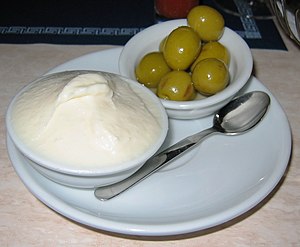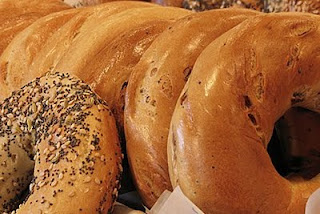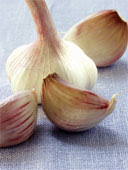Tasty Tweets: 55+ Foodies to Follow on Twitter: “
via Mashable
 Whether you love to cook, or just love to eat, there are plenty of great foodies on Twitter that you can follow. From celebrity foodies you’ll recognize from TV to professional chefs, bloggers, and restaurant critics, many food lovers are tapping into Twitter’s real-time network to offer up recipes, restaurant recommendations (or warnings), and an inside look at life in the kitchen.
Whether you love to cook, or just love to eat, there are plenty of great foodies on Twitter that you can follow. From celebrity foodies you’ll recognize from TV to professional chefs, bloggers, and restaurant critics, many food lovers are tapping into Twitter’s real-time network to offer up recipes, restaurant recommendations (or warnings), and an inside look at life in the kitchen.
This list has over 55 great foodies to follow on Twitter, but please feel free to suggest others in the comments (or if you’re a food tweeter, leave your own Twitter info!). Fair warning, though: before perusing the list, you might want to grab a snack. A lot of the Twitter users included here post mouth-watering images of some great dishes, or even use them as their background images. I think I gained five pounds just writing this post!
Celebrity Chefs and Foodies
Below are the chefs and foodies you’re likely to recognize from TV. They run the gamut from food critics to cooking competition judges to TV show hosts. Some are household names (like, Martha Stewart) while others are a bit less well-known, unless you’re a Food Network junkie.
@AndrewZimmern – Andrew Zimmern is the host of the Travel Channel show, “Bizarre Foods with Andrew Zimmern”, on which he tours the world in search of strange and weird local foods. In addition, he’s a food columnist and dining critic, radio talk show host and chef.

@BFlay – Bobby Flay has hosted seven TV shows on Food Network, including “FoodNation,” “Boy Meets Grill,” “Hot Off the Grill with Bobby Flay,” and “Throwdown.” He’s also an Iron Chef on “Iron Chef America.”

@CatCora – Cat Cora is a professional chef best known for being an “Iron Chef” on the Food Network TV show “Iron Chef America.” She’s also the author of two cookbooks, “Cat Cora’s Kitchen: Favorite Meals for Family and Friends” and “Cooking From the Hip: Fast, Easy, Phenomenal Meals,” and the executive chef at Bon Appetit magazine.

@ChefGuyFieri – Guy Fieri won the second season of Food Network’s “The Next Food Network Star.” He’s hosted a number of shows on Food Network: “Guy’s Big Bite,” “Diners, Drive-Ins and Dives,” and “Ultimate Recipe Showdown.”

@Emeril – Emeril Lagasse is a chef, restaurateur, cookbook author and TV personality. He’s famous for his catchphrases, most notably “BAM!” and “Kick it up a notch!” He tweets about his restaurant openings, TV appearances and book signings.

@GaelGreene – Gael Greene has been a restaurant critic in New York City for more than forty years. She was the restaurant critic for New York Magazine from 1968 until 2002 and her work has appeared in Food & Wine, Travel + Leisure, and Food Arts, among other publications. She’s the author of seven books, including “Insatiable: Tails from a Life of Delicious Excess.” Most recently, she’s become a regular judge on “Top Chef Masters.”

@GDeLaurentiis – Giada De Laurentiis is the host of several Food Network shows: “Behind the Bash,” “Giada’s Weekend Getaways,” “Everyday Italian,” “Giada in Paradise,” and “Giada at Home.” She’s also a regular on the Today show on NBC.

@Jamie_Oliver – Jamie Oliver, also known as The Naked Chef, is a British chef and TV personality. He was the second British chef to appear on “Iron Chef America” as a challenger.

@MarthaStewart – Domestic goddess Martha Stewart started out in catering and has branched out into virtually every aspect of homemaking. While her tweets aren’t strictly food-related, she does provide recipes (both directly within tweets and via links).

@offalchris – Chris Cosentino is the chef at Incanto, an Italian restaurant in San Francisco. He recently began starring in a new show on the food network, “Chefs vs. City,” and has also made a number of other TV appearances on shows including “The Next Iron Chef,” “Iron Chef America,” “Martha Stewart,” and “The Best Thing I Ever Ate.” He tweets tons of food images and photos from behind the scenes at the restaurant.

@Paula_Deen – Paula Deen is probably best known for her down-home, southern-style cooking. She’s the host of her own show on Food Network, “Paula’s Home Cooking,” which won her two Daytime Emmy Awards.

@roccodispirito – Rocco DiSpirito is a well-known professional chef and the author of five cookbooks. He’s appeared on a number of television shows including A&E’s “Rocco Gets Real”. His tweets cover his books, recipes, and other food-related info.

@The_Neelys – The Neelys are the hosts of the “Down Home with the Neelys” show on Food Network. They’re also the owners of the Neely’s Bar-B-Que chain of restaurants in Tennessee.

@TheDeenBros – Bobby and Jamie Deen are the sons of TV chef Paula Deen. They’re about to release their third cookbook and had their own TV show on the Food Network, Road Tasted. They also regularly appear on their mother’s show.

@TylerFlorence – Tyler Florence is a chef and star of a number of Food Network shows, including “Tyler’s Ultimate” and “Food 911″ among others. He’s also involved in the nonprofit Afterschool Alliance, which promotes and supports after school programs. His tweets offer a real glimpse into his personality and he offers up recipes and converses with his followers.

Food Blogs and Bloggers
The Twitterers listed below run some of the most popular foodie blogs on the web. They’re all great resources for finding new recipes and keeping up with foodie news. Some can point you in the right direction for finding great restaurants in a given town while others can show you how to make great dishes right at home.
You can find more foodie blogs and bloggers on Alltop under “Food,” “Vegan,” “Recipes,” and “Organic,” or on this list of foodie bloggers who Twitter from Serious Eats.
@bayareabites – Bay Area Bites is a food blog covering San Francisco Bay-area restaurants and food from KQED Public Media. It’s written by professional chefs, food writers and cookbook editors.

@broylesa – Addie Broyles writes the food blog, “Relish Austin” for Austin360.com. She also writes the “Relish Austin” column for the Austin American-Statesman newspapers a few times each month.

@CandyBlog – Cybele May is the blogger behind CandyBlog, which covers candy from all over the world. Her tweets cover the same, including links to posts on her blog and discussions with other candy enthusiasts.

@CateOMalley – Cate O’Malley blogs at Sweetnicks and is a freelance food writer. She runs The Well Fed Network (a group of sites dedicated to food and wine) and writes for a variety of food sites. Her tweets cover recipes and anything food-related.

@ChewOnThat – Chew On That is a food blog covering recipes, culinary terminology and tips, and information on different ingredients. Their tweets cover similar subject matter.

@edlevine – Ed Levine blogs over at Serious Eats, where he writes about all things food-related. Recipes, restaurant reviews, and food news and commentary are just for starters. His tweets cover similar content, including info about eateries in NYC.

@foodgawker – Foodgawker is a blog that covers the best recipes from a variety of other food blogs. They tweet links to recipes from all over the blogosphere, too.

@homesicktexan – Lisa Fain blogs about Texas-style cooking, including tons of recipes, at the Homesick Texan blog. She tweets about all sorts of Texas foods as well as other recipes.

@Jeters – Jennifer Fisher blogs about cooking and offers up lots of different recipes over at FoodBat. Her tweets cover similar topics, including local/seasonal food and more recipes.

@locavoreblog – La Vida Locavore is a blog devoted to local food. They cover planting, growing, cooking, baking, and more related to local foods. They tweet about all sorts of food-related issues, including food safety regulations, menu labeling, and more.

@mizmaggieb – Maggie Battista blogs at EAT Boutique, posting mostly recipes. Her tweets cover food she’s cooked or eaten out.

@nandita – Alejandra Ramos is the blogger behind Always Order Dessert. Her training came from a professional culinary institute in Florence, Italy and she’s currently working on her first book. Her tweets cover all aspects of food and include recipes and suggestions.

@offbeat_eating – Kristin has been traveling all over the country trying different local foods and then blogging about her experiences at Food Trip USA. She tweets tons of photos of foods from her travels, as well as links to recipes and other cooking-related resources.

@phillygrub – Philly Grub is a blog written by Philadelphia foodies that covers restaurants, cooking tips, food commentary, and recipes. They tweet about the same topics.

@rasamalaysia – Rasa Malaysia is a food blog that covers Asian recipes and cooking techniques. They tweet about Asian food and cooking.

@ShunaFish – Shuna Fish Lydon has been a professional chef and baker for more than 16 years. She tweets about food, recipes, restaurants, and more. She blogs at Eggbeater.

@simplyrecipes – Elise Bauer runs the Simply Recipes blog, which posts constantly-refined recipes from Elise’s family. She tweets about recipes, other food bloggers, and anything else cooking-related.

@Slice – Slice is a blog devoted entirely to pizza. They cover pizza recipes, pizza restaurant reviews, and news related to pizza.

@SpecialDark – Herschell Taghap blogs a variety of recipes at All Things Chill. His tweets cover all aspects of food, including recipes and flavor notes.

@StickyGooeyChef – Susan Filson is an aspiring chef and the blogger behind Sticky, Gooey, Creamy, Chewy. She covers a variety of recipes, some of which come from her family and have been passed down by her mother and grandmother.

@sushiday – Allison Day blogs at Fridgg and Sushi Day. She blogs a variety of recipes she cooks, including sushi (on Sushi Day) and everything else (on Fridgg).

@TheDelicious – Sarah J. Gim blogs at The Delicious Life, which covers cooking and restaurants, among other topics (travel, lifestyle and dating). She tweets about a variety of things, food included.

@TOfoodie – Andrea Chiu is a food blogger who often posts restaurant reviews and food commentary on her Twitter feed. Her blog also includes food commentary and recipes.

Food Writers and Editors
The Twitterers here range from editors and writers for some major food magazines (like Gourmet) to freelance food journalists to cookbook writers. Some of them also run food blogs or write for online outlets.
@CarolynJung – Carolyn Jung is an award-winning food writer who blogs at Food Gal. She’s received a number of first-place honors from the Association of Food Journalists and has been a judge in the Pillsbury Bake-Off (among other contests).

@chezpim – Pim Te is a food blogger who tweets about tons of recipes (including a particularly delicious-looking recipe for making brown butter ice cream in a blender). Her food writing, recipes, and photos have also appeared in a variety of print media outlets, including the New York Times and Food & Wine Magazine.

@JulieK – Julie Kalivretenos is a freelance food writer, slow food activist, and raw food enthusiast who blogs at Julie’s Raw Ambition. Her blog covers information about raw and natural foods, including some recipes. Her tweets cover similar topics, including links to articles she’s written.

@KarenAndAndrew – Karen Page and Andrew Dornenburg are the authors of numerous books, most recently “The Flavor Bible,” winner of the 2009 James Beard Award. Their tweets talk about their books, food commentary, and interesting links.

@MattArmendariz – Matt Armendariz blogs about food and drink at MattBites, part of the Martha’s Circle group of blogs selected by the editors of Martha Stewart Living. He’s a food photographer, blogger, and writer, as well as a chef. He’s been featured in The New Yorker, Bon Appetit, House Beautiful, and on Martha Stewart’s daytime TV show. His tweets cover food and drink-related topics.

@norecipes – Marc Matsumoto is a freelance food writer who writes at No Recipes, a blog covering food and cooking techniques from around the world. His Tweets cover the same.

@RobbWalsh – Robb Walsh is a food writer and restaurant critic who has worked for Houston Press, Natural History Magazine, NPR, Chile Pepper Magazine, Austin Chronicle, Gourmet, and many more. He’s also the author of a number of books, including “The Tex-Mex Cookbook,” “The Texas Cowboy Cookbook,” and “Are You Really Going to Eat That?” He largely covers barbecue, Tex-Mex, and other foods common in Texas.

@Ruhlman – Michael Ruhlman is the author of five books on food and cooking, as well as four cookbooks. He’s also been on a number of TV shows, including “Iron Chef America” (as a judge), “Next Iron Chef” (also as a judge) and “Cooking Under Fire.” He offers up all sorts of food-related commentary and links on Twitter.

@RuthReichl – Ruth Reichl is the Editor in Chief of Gourmet magazine and a former restaurant critic for The New York Times. She’s been writing about food since 1972 and has written or edited numerous books, including the 10-book “The Modern Library Food” series. Her tweets revolve entirely around food, with tons of info about her personal menu choices.

@steamykitchen – Jaden is a TV chef on Tampa Bay’s CBS affiliate, the food writer for the Tampa Tribune, and a blogger at SteamyKitchen.com. She tweets about food, recipes, her career, and offers blogging tips.

@thefoodgeek – Brian J. Geiger is a freelance food writer who blogs at thefoodgeek.com and writes for Fine Cooking Magazine. His blog covers recipes, kitchen equipment and gadgets, and anything else food-related. His tweets do the same.

Professional Chefs
While some chefs might be too busy in the kitchen to tweet, there are a few really great ones who share a behind-the-scenes look at running a restaurant kitchen or give insight into improving your own cooking. Some of them are listed below.
@ChefMark – Mark Tafoya is a personal chef who creates travel and food videos for Culinary Media Network. He also blogs at ReMARKable Palate. He tweets lots of photos, both of food and other things, and cooking tips, links, and food commentary.

@dcpatterson – Daniel Patterson is the chef at Coi and author of “Aroma”. He offers up some great tweets about food (including article links and images) and a behind the scenes look at life as a professional chef.

@Gachatz – Grant Achatz is the owner of Chicago restaurant Alinea. He tweets about the restaurant and food in general.

Additional Foodies
The foodies listed below didn’t really fit into any of the categories above, but they’re still worth a follow. They include everything from online cooking schools to radio hosts to online cooking shows, but all offer regular updates of interest to foodies.
@bitchinkitchen – Bitchin’ Kitchen is an online comedy cooking show reminiscent of the old “Beakman’s World” TV show. They offer up recipes and information about the show in their tweets and on their website.

@everydayfoodsan – Sandy Gluck is the host of the Everyday Food show on Sirius and XM satellite radio. She tweets about the show and the topics it covers.

@Foodimentary – Foodimentary is a @ShortyAward-winning (in the #food category) Twitterer who tweets food facts and cooking tips every day.

@Foodista – Foodista is a cooking wiki. They offer up information on recipes, food blogs, and food facts.

@nytimesfood – This is the Twitter feed for the New York Times Dining section. Their tweets are usually about articles from the Times focusing on food and drink.

@rouxbe – Rouxbe is an online video cooking school. They offer a free membership with video tutorials, recipes, and more, as well as premium memberships for more advanced features, including personal chef support. They tweet about their daily cooking lessons and blog in addition to answering some questions posed by their followers.

More food-related resources from Mashable:
– Top 15 Social Media Resources for Foodies
– 15 More Fantastic Social Media Resources for Foodies
– Tweetable Eats: What Street Vendors Can Teach Businesses About Twitter
Image courtesy of iStockphoto, Andyd
Reviews: Twitter, blog, iStockphoto
Tags: Food, foodie, foodies, Lists, tweets, twitter, twitter list
”
 Image via Wikipedia
Image via Wikipedia![Reblog this post [with Zemanta]](https://img.zemanta.com/reblog_e.png?x-id=3c68695f-332d-4eae-adef-51a7c864a776)

 Whether you love to cook, or just love to eat, there are plenty of great foodies on
Whether you love to cook, or just love to eat, there are plenty of great foodies on 

























































![Reblog this post [with Zemanta]](https://img.zemanta.com/reblog_e.png?x-id=6a1c101b-f6b1-4ce0-8ae1-ace65fedeb96)

![Reblog this post [with Zemanta]](https://img.zemanta.com/reblog_e.png?x-id=eae2877f-ed29-4c8c-bf71-d6785ffb6df8)

![Reblog this post [with Zemanta]](https://img.zemanta.com/reblog_e.png?x-id=d53bd83d-62e0-4d11-824a-511f64e8f5d5)

![Reblog this post [with Zemanta]](https://img.zemanta.com/reblog_e.png?x-id=bb8e4449-be8f-42e0-b965-32955c1ebf08)


![Reblog this post [with Zemanta]](https://img.zemanta.com/reblog_e.png?x-id=67921d78-1f2c-4ec6-ba6e-207168511114)

![Reblog this post [with Zemanta]](https://img.zemanta.com/reblog_e.png?x-id=96c62d3c-7f02-432d-be1a-33ebc16ec82c)

![Reblog this post [with Zemanta]](https://img.zemanta.com/reblog_e.png?x-id=68d65b6e-2045-4aef-bdc1-fc856f605b87)